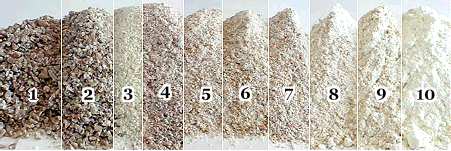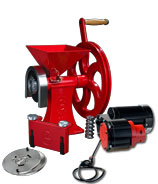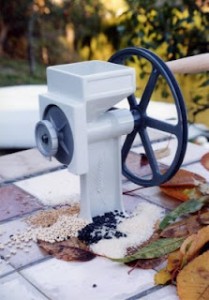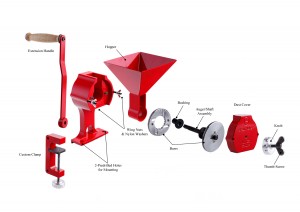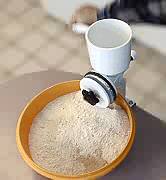We start out with the coarsest grinds on the left and progress to ever finer flours as we move to the right. The finer the grind, the better the gluten will develop – the better the flour for bread making.
- This is wheat after the first pass through the Corona or Victoria grinder. The wheat is just cracked. Some whole kernels of wheat make it through.
- Wheat after a second pass through the Corona or Victoria grinder. It’s finer than the first grind, but still has the coarseness of cracked wheat. The Corona and Victoria mills are not good grinders for bread making.
- This is Germade, which is included as a reference point to give you some idea where the surrounding flours are on the scale.
- This flour is from the Back to Basics or Family Grain Grinder after the first grind. In my opinion this flour is still too coarse to make good bread.
- This flour is from the Back to Basics or Family Grain Grinder after the second grind.
- Flour from the Diamant, Little Ark with burrs, and Silver Nugget with burrs. This is not a super fine flour but good enough for bread making.
- The Silver Nugget with Stones.
- The Little Ark with Stones.
- Flour ground with an impact grinder – almost the consistency of white, processed flour. This sample, coming from an electric grinder, was also a reference point to compare the other flours to. It’s a little darker in color than white flour because of the wheat bran but if you conduct a ‘Pinch Test’ you will feel very little difference between the two flours. The Silver Nugget, The Little Ark, and the Country Living Grain Mill are capable of producing flour as fine as this on a tighter setting–though production of flour is measurably slower.
- White, processed flour –bleached and nutritionless–included only as a reference point.
